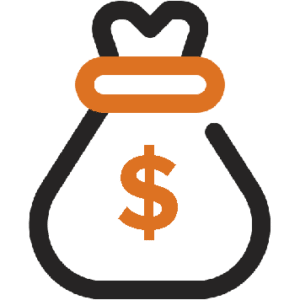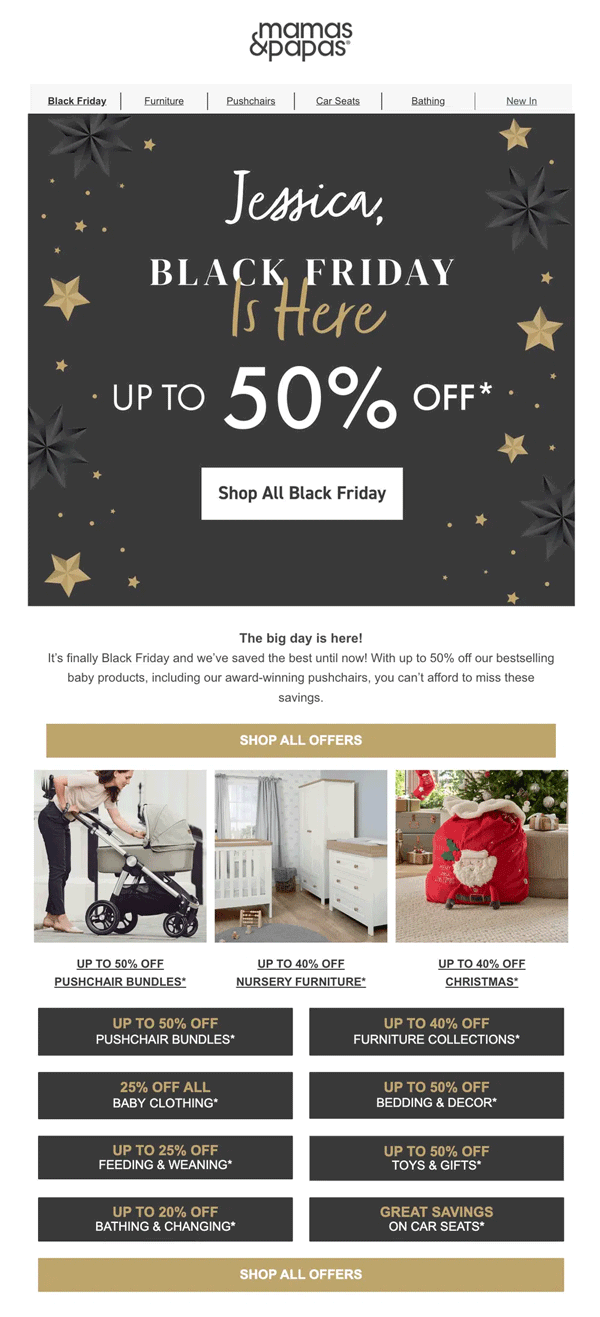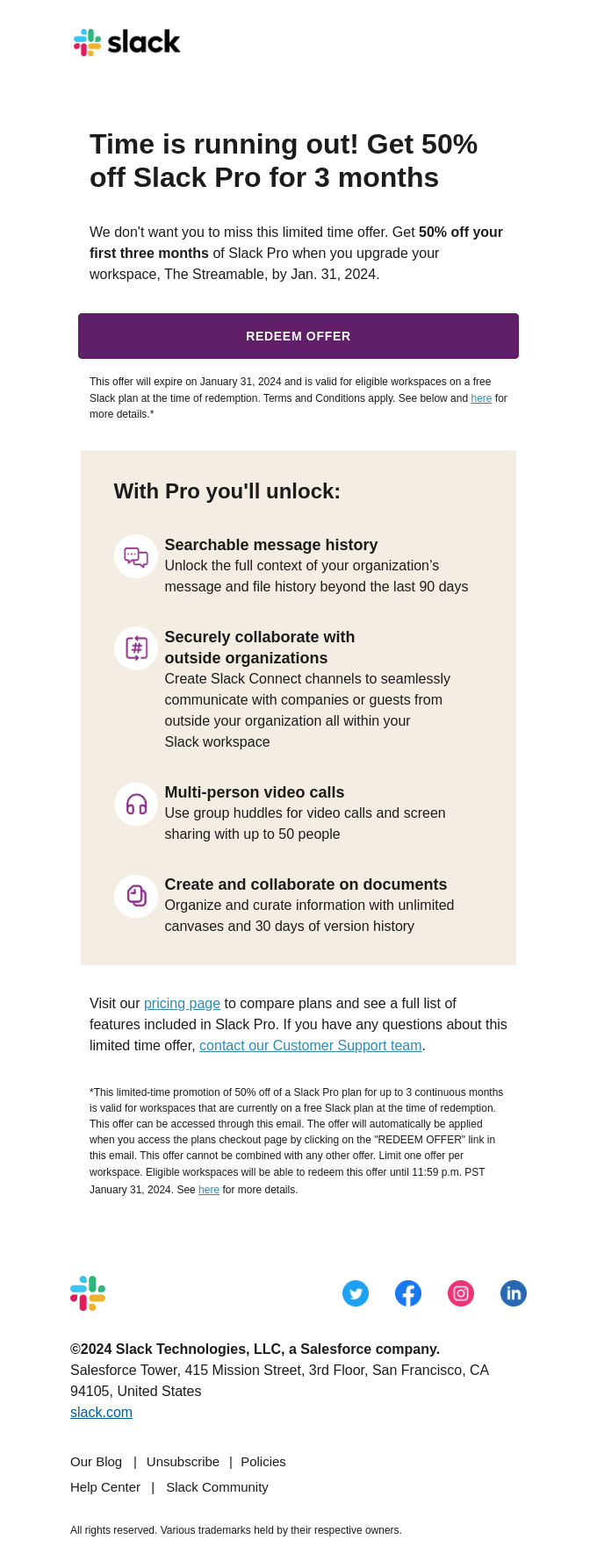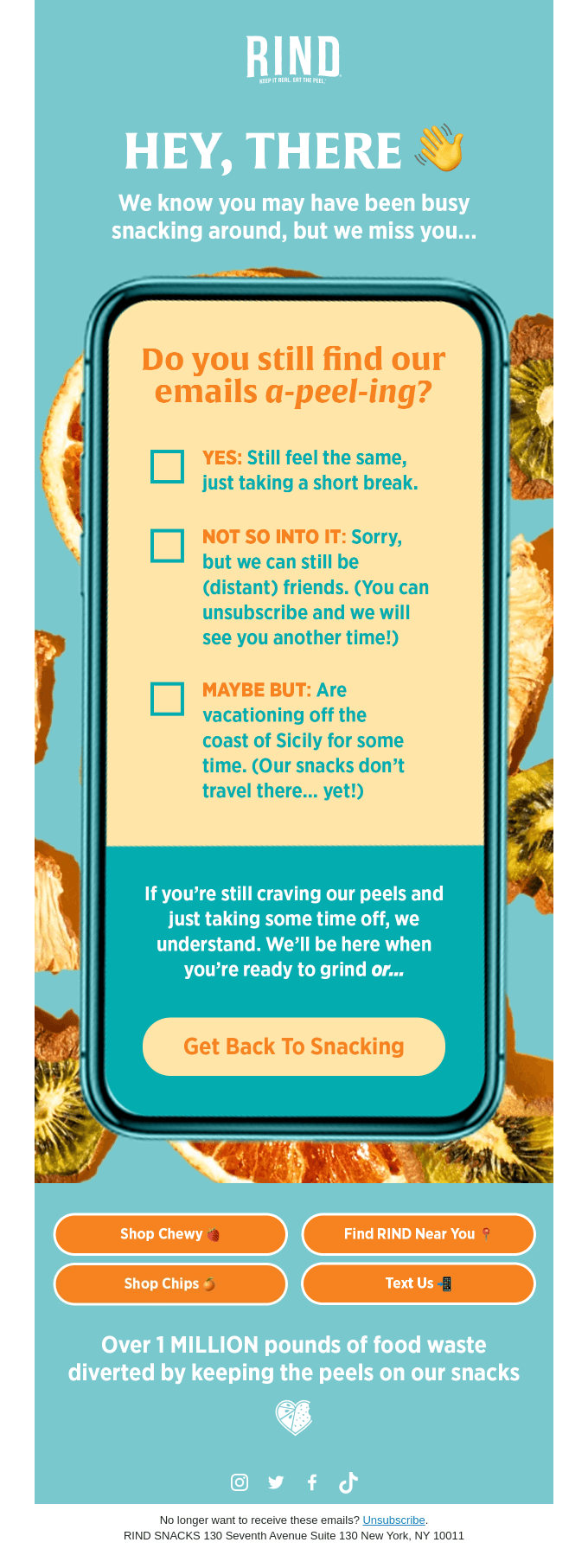Sending the same generic email to everyone on your list won’t cut it. Your message gets lost in the inbox, leaving open rates and conversions flat.
With email segmentation, you can tailor messages to specific audience groups, making your emails feel personal, relevant, and irresistible to open.
This article will explore how to convert your email marketing from a scattergun approach to a laser-focused strategy. Learn how to implement email segmentation and how it can boost your engagement, conversions, and return on investment (ROI).
What is email segmentation?
Email segmentation is the strategic practice of dividing your audience into smaller, focused groups—customer segments—based on specific criteria like behavior, interests, or demographics. This email segmentation strategy allows you to deliver relevant content to each target audience, making your emails more effective.
Think of it as sorting your subscribers into different buckets. Each bucket gets its own personalized email that speaks directly to its needs and preferences. For example, an online bookstore might segment by genre preferences—sending mystery lovers the latest thriller releases, while non-fiction enthusiasts get thought-provoking book recommendations.
With segmentation driving relevant content, email marketing delivers a high return on investment, yielding $36 for every dollar spent. By tailoring messages to customer segments, you increase engagement and directly boost sales, as subscribers are more likely to act on content that reflects their interests.
Email segmentation vs. email personalization
Segmentation groups your target audience by shared traits, while personalization customizes content for individuals. Together, they personalize the experience by creating highly relevant emails that resonate with each subscriber.
For example, email segmentation might group all your VIP customers together. Personalization then customizes each VIP’s email with their name, past purchases, and specific product recommendations that fit their preferences.
Both strategies work hand in hand to create more relevant, engaging emails. Use segmentation to target the right customer segments, then layer on personalization to deliver a customized experience that makes each subscriber feel seen and valued.
When combined, segmentation and personalization turn your emails into highly relevant messages that speak to group traits while also catering to individual preferences—making your subscribers feel like you’re speaking directly to them.
Importance of segmentation in email marketing
Segmentation ensures your message resonates with the right groups, engaging subscribers who actually want to listen and showing them that you understand their needs. Our State of Email Innovations Report, 24% of marketers ranked email segmentation as the most effective tactic for boosting performance.
That’s because sending content that directly addresses your subscribers’ interests creates a sense of trust and relevance that deepens their connection to your brand.
If you need a set of copy-and-paste reasons to share with your boss about why you need to lean into email segmentation more, here you go:
- Improved open, click-through, and deliverability rates: By tailoring content to subscriber interests, segmentation leads to higher open rates, more clicks, and improved conversions. It also helps reduce unsubscribe rates and ensures better deliverability by boosting engagement metrics that email providers track.
- Increased conversion rates: Segmentation enables you to match messaging and offers and calls-to-action to the right audience. When subscribers receive offers that resonate with their current needs or buying habits, they’re more likely to trust the offer and complete a purchase.
- Lower unsubscribe rates: Sending relevant, targeted content reduces inbox fatigue. When you use behavioral segmentation data to send emails at a frequency each segment prefers, you keep engagement high while avoiding overload.
“Email segmentation is the simplest way to ensure you’re sending the right message to the right person at the right time. You don’t need any technical skills to create segments of your audience, either. Most—if not all— ESPs will give you that feature out-of-the-box. The only thing you need to decide is what segments you want to create.”
Prepare your email program for what’s to come
Get the data, insights, and trends you need from nearly 1,000 marketers to future-proof your email program from The State of Email Innovations Report.
How to segment your email list
Ready to create a more personalized experience? Here are three steps to get you started:
Gather the right data
To segment effectively, you need to know your audience inside and out. Without accurate behavioral data, you can’t create emails relevant to your targeted groups—segmentation will be based on guesswork, not insights.
Collect subscriber information through sign-up forms, surveys, purchase history, and behavioral data like email engagement or website activity. Focus on data that’s actionable for your business—don’t ask for information you won’t use.
Interestingly, 20% of marketers securing the right data for segmentation and personalization the biggest obstacle in the email production cycle. Combat this challenge by using website analytics, social media insights, and customer feedback. Use progressive profiling to gather data over time, making it easier for subscribers.
Progressive profiling lets you collect information gradually across multiple interactions, starting with basic info at sign-up, then adding more details—like preferences or demographics—over time.
As you gather this data, prioritize transparency and privacy. Make sure subscribers know how their information will be used to create their personalized experience.
Identify key segmentation criteria
Choosing the right criteria is crucial for building a successful email segmentation strategy. Identify factors that truly influence your subscribers’ behavior and tailor your emails to meet their preferences.
Common criteria include:
| Demographics: Age, gender, location, job title | |
 |
Psychographics: Interests, values, lifestyle |
| Behavior: Past purchases, website activity, email engagement | |
| Customer lifecycle stage: New customer, loyal customer, at-risk | |
 |
Purchase history: Frequency, recency, monetary value |
| Email preferences: Content topics, frequency, format (text vs. HTML) | |
 |
Geographic segmentation: Target subscribers based on location for region-specific offers |
For example, if your goal is to increase repeat purchases, segment by purchase history and target customers who have recently bought from you. By aligning your segments with actionable behavioral data, you can create more relevant offers and meaningful interactions with your audience.
Don’t overcomplicate it—start with a few key segments and expand as you learn what works.
Create your segments
With your data and criteria in hand, it’s time to break down your email list into targeted groups. Start broad, like all customers who made a purchase in the last 90 days. Over time, refine your segments by adding behavior-based criteria such as website visits or email engagement.
Use segmentation to group subscribers based on behavioral data and other segmentation criteria. Start with segments aligned with your immediate marketing goals. For example, segment by purchase history to create a “high-value customer” group for your loyalty program.
A/B test different combinations—like comparing geographic segmentation versus behavioral data—to see which delivers better results and helps create emails that convert.
5 practical email marketing segmentation ideas
There are plenty of ways you can segment your email list. Here are five ideas apart from standard demographic and psychographic options that can help:
Content consumption patterns
Understanding your subscribers’ content consumption patterns helps you send targeted, relevant emails, increasing open rates and driving engagement.
Once you understand your subscribers’ content habits, you’ll send messages that truly resonate. Segment based on:
- Topic interests: Track which subjects get the most clicks. A tech-focused reader might love your gadget reviews, while a fashion enthusiast clicks on style tips.
- Email frequency: Some subscribers crave daily updates, others prefer a weekly digest. Offer a preference center where subscribers can set their own update cadence, or track engagement patterns (e.g., who opens daily versus weekly) and adjust frequency accordingly.
- Content format: Do they prefer in-depth articles, quick bullet points, or video content? Tailor your emails to match these preferences.
Aligning your emails with subscribers’ content habits boosts engagement and keeps your audience anticipating your next message.
Seasonal buying patterns
Capitalize on the ebb and flow of consumer behavior throughout the year. This method aligns your emails with seasonal trends. The result? Greater relevancy and higher sales. Segment your list based on:
- Holiday shoppers: Identify shoppers who are more active during holidays, like Black Friday or Christmas, and send targeted offers timed to these events
- Weather-based needs: Target winter gear to cold climates, summer essentials to warmer regions.
- Annual events: Tailor content for back-to-school shoppers or tax season planners.
Time your offers around key seasonal events to increase the relevance of your emails and capitalize on moments when subscribers are more likely to make purchases.
This boosts short-term sales and keeps your brand top of mind year-round during key seasons.
Product feature usage (for SaaS companies)
For SaaS businesses, understanding how customers interact with your product is crucial for targeted email marketing campaigns. Segment your list based on:
- Feature adoption: Identify which features users haven’t explored. For users who haven’t explored certain features, send onboarding emails with tutorials or case studies showing how those features solve common problems.
- Usage frequency: Provide power users with advanced tips. Power users are more likely to appreciate and act on advanced tips, helping them get even more value from your product, which strengthens their loyalty and reduces the risk of churn.
- Subscription tier: Upsell premium features to basic users. Segment your basic users and send them personalized recommendations highlighting premium features they haven’t explored, paired with a limited-time upgrade offer.
- Time since last login: Re-engage dormant users with ‘we miss you’ campaigns. Include a personalized offer or highlight new features they haven’t tried since their last login. Pair this with a limited-time incentive, like a discount or free trial extension, to entice them back.
Using product usage data creates hyper-relevant emails that enhance user experience, boost engagement rates, and reduce churn. This improves customer satisfaction and increases the likelihood of upgrades and long-term retention.
Lead score or customer lifetime value
Prioritizing your marketing efforts based on potential return is a smart email marketing strategy.
- Lead scoring: Segment prospects into low, medium, and high lead scores, and send higher-scored leads content that pushes them toward conversion—like case studies or testimonials—while nurturing low scorers with educational material.
- Customer Lifetime Value (CLV): High-CLV customers contribute significantly to your revenue, so reinforce their loyalty by offering exclusive deals, early access, and personalized recommendations that make them feel valued.
- Engagement level: Tailor your approach based on how subscribers interact with your emails and website. Re-engage inactive users with special campaigns.
- Purchase frequency: Create VIP segments for frequent buyers, offering early access to new products or special discounts.
Use these insights to optimize your email campaigns and create a stronger connection with your top prospects and most loyal customers.
Cart abandonment behavior
Addressing cart abandonment is crucial for e-commerce businesses. Segment your list based on:
- Time since abandonment: Send immediate reminders for fresh abandonments, with follow-ups at strategic intervals.
- Cart value: Offer larger discounts or free shipping for high-value abandoned carts to incentivize completion.
- Product category: Tailor your messaging based on the types of products left behind, addressing specific pain points or highlighting benefits.
- Abandonment frequency: Create different strategies for one-time abandoners versus serial cart-leavers.
- Device used: Optimize recovery emails for the device where the abandonment occurred, ensuring a seamless return to purchase.
Targeted recovery campaigns not only help recover lost revenue but also reinforce brand value, showing that you’re attentive to customer behavior and needs.
Using segmentation in your email personalization strategy
Segmentation and email personalization are a dynamic duo in email marketing. When combined, they create a powerhouse strategy that speaks directly to your subscribers’ hearts (and wallets).
Here’s how to use segmentation for better personalization.
- Dynamic content: Use segment data and dynamic email design tools to automatically customize email sections based on segment data. For example, a fitness app could show strength tips to users logging weight sessions and running advice for cardio users.
- Personalized subject lines: Tailor subject lines to segment interests. A travel site might say “John, Your Dream Paris Getaway Awaits!” for one user, and “Sarah, Discover Bali’s Hidden Beaches” for another.
- Segment-specific offers: Provide exclusive promotions based on segment traits. An online course platform could offer students a “Back to School” discount, while promoting career growth to professionals.
- Behavioral triggers: Automate emails based on actions. An e-commerce store might send “We Miss You” offers to inactive customers and “VIP Early Access” to frequent shoppers.
- Tailored sender names: Use different “From” names for relevance. For example, a retailer could use “Sarah from BeautyGlow” for skincare fans and “Mike from TechTrends” for tech lovers.
- Customized email frequency: Adjust email cadence to segment preferences. Daily updates for active traders, weekly for casual investors, and monthly for long-term holders.
Layer personalization onto your segments to create tailored experiences that drive real results.
Harness the power of email personalization
Create 1:1 experiences using email personalization that goes beyond “Hello, %%first_name%%” with dynamic and real-time content.
Advanced email segmentation tactics
Want to go beyond the basics? Here are three types of email segmentation that take it further.
Micro-segmentation for hyper-personalized campaigns
Think email segmentation is powerful? Micro-segmentation takes it even further.
While traditional segmentation might group your list into broad categories, micro-segmentation goes deeper. It allows you to target ultra-specific behaviors, preferences, and actions, making each email feel highly personalized. The goal? To speak directly to your subscribers’ individual needs, driving higher engagement and loyalty.
Let’s simplify this. Instead of simply segmenting “women aged 25-35,” you could zero in on “urban millennial women who’ve purchased eco-friendly products in the last 30 days and clicked on your last three emails.” You’re getting more specific and relevant, ensuring your messages resonate with their recent actions.
Here are a few practical ways to use micro-segmentation:
- Lookalike audiences: Identify your best customers and create segments based on similar traits.
- Cart abandoners: Target shoppers who left items behind with specific product reminders.
- Sales funnel positioning: Customize content to match exactly where subscribers are in their buyer’s journey.
The result? Emails that feel less like mass marketing and more like one-on-one conversations, boosting engagement and increasing conversions.
Collaborative filtering for product recommendations
Ever notice how shopping sites seem to know exactly what else you might want? That’s called a smart recommendation system. It uses your previous shopping behavior, along with data from other customers, to predict what you might want to buy next.
It’s as if you had a personal shopping assistant who suggests items based on what’s popular with people like you.
Here’s how it works:
- Item-based filtering: “Customers who bought X also bought Y”
- User-based filtering: “Customers similar to you also liked Z”
Think of Netflix. When it recommends shows based on what you’ve watched and what others with similar tastes enjoy, that’s collaborative filtering in action. This method helps create more relevant suggestions that keep your audience engaged and interested.
By using this data-driven approach, you can create personalized product recommendations that feel tailored and relevant to each subscriber. This makes the shopping experience smoother and more enjoyable—and keeps customers coming back for more.
Real-time segmentation also plays a key role here. As customers interact with your brand, their preferences evolve. Collaborative filtering ensures your recommendations stay up-to-date, reflecting the latest trends and interests of your audience.
Cross-channel segmentation
Cross-channel segmentation is all about using the different ways your customers interact with your brand—whether that’s through emails, social media, in-store visits, or browsing your website. The goal is to connect these dots to get a full picture of your customer’s preferences and needs.
For example, if someone browses your website for a product but doesn’t buy, you can follow up with an email promoting that product. Or, if they engage with your brand on social media, you can send emails featuring content or products they’ve liked.
Weave these diverse data streams together to create rich, multi-dimensional segments that personalize customer journeys.
Use a customer data platform (CDP) like Segment to unify data streams from email, social media, and in-store interactions, then set up automated workflows that trigger inspiring personalized emails based on multi-channel behaviors.
Use this holistic approach to:
- Identify high-value customers across all channels
- Tailor email content based on social media preferences
- Trigger location-based emails to complement in-store visits
Think of a customer who visits your website, interacts with your Instagram posts, and receives your emails. Cross-channel segmentation allows you to combine these actions so you can send them an email with a product they viewed online or liked on Instagram—keeping your messaging consistent and engaging.
Start by identifying the key data points across your channels, then experiment with micro-segmentation and collaborative filtering to see how deeper email personalization planning can transform your campaigns. The more precise your segmentation, the more impactful your results.
Industry-specific segmentation strategies
Different industries can leverage segmentation in unique ways to maximize engagement. Here’s a breakdown of specific strategies that work for various sectors:
Retail & eCommerce
Segmentation in retail goes beyond demographics—it’s about aligning with customers’ shopping habits:
- Purchase history: Recommend products or exclusive offers based on past purchases.
- Browsing behavior: Suggest items from categories customers have shown interest in.
- Geographic location: Use location for targeted promotions, like in-store offers or seasonal product suggestions based on climate.
A great example of this is Mama’s & Papas’ Black Friday campaign, which used personalized imagery and exclusive discounts to drive urgency.
They segmented their customers by purchase behavior and used visuals that aligned with customer preferences, making each email feel unique and increasing the sense of exclusivity.

This targeted approach played on FOMO (fear of missing out), driving high engagement and conversions.
Financial services
Financial institutions can leverage customer data to create highly personalized offers:
- Income levels: Offer exclusive investment products or budgeting tools that match financial capacity.
- Investment portfolios: Send personalized content on portfolio management or beginner investment advice.
- Spending habits: Tailor advice or product offers based on spending patterns, like cashback deals or high-yield savings.
- Life stages: Target customers with relevant products for their stage in life, like student loans or retirement planning.
- Credit score: Provide credit-building tools or premium financial products based on credit health.
- Financial goals: Deliver advice and offers that align with long-term goals, like saving for a home or retirement.
Venmo’s teen debit card offer is a great email inspiration for this use case.
The campaign zeroes in on a life stage where parents are looking for ways to introduce financial responsibility to their kids.

Source: Really Good Emails →
The email highlights the card’s features that matter most to this segment: parental controls, withdrawal limits, and transaction tracking.
Venmo emphasizes safety and control and uses relatable imagery of teens and their spending habits.
By highlighting parental controls and spending limits, Venmo smartly addresses the concerns of this audience segment, resulting in higher conversion rates.
SaaS
SaaS companies understand how people use their product and can use that personalization data to tailor emails. Data includes:
- Usage frequency: Regular users might benefit from advanced tips or feature updates, while those who are less active could be encouraged to explore more.
- Subscription tier: Tailor upgrade offers to free users or premium feature suggestions for basic subscribers.
- Feature adoption: If users haven’t explored a key feature, send targeted onboarding emails showcasing how that feature solves common pain points.
- Customer health score: At-risk customers can be re-engaged with personalized support or offers that speak to their specific needs.
Slack’s email campaign is a prime example of this segmentation in action.
This email targets users on the free plan and encourages them to upgrade with a limited-time offer.

Source: Really Good Emails →
Slack does several things right here:
- Urgency: The “Time is running out!” headline creates FOMO
- Clear value proposition: 50% off for 3 months is prominently displayed
- Feature highlights: Showcases Pro benefits relevant to growing teams
- Specific CTA: “Redeem offer” button stands out and drives action
- Targeted messaging: Focuses on features that free users likely desire
By segmenting free users who have shown signs of growth (e.g., increased team size or usage), Slack ensures the upgrade offer is relevant, addressing their current needs while creating urgency to act before they outgrow the free plan.
Travel & hospitality
In travel, personalization revolves around individual preferences and behaviors:
- Destination preferences: Group travelers by their favorite vacation spots—whether it’s a tropical beach or a bustling city—and send offers that match their interests.
- Loyalty program status: Segment your audience based on their membership tier and send personalized offers, like free upgrades or exclusive discounts, to frequent flyers or hotel members.
- Past bookings: Use booking history to recommend similar or complementary trips. For instance, if a customer has previously booked a family-friendly resort, you can offer them similar destinations or activities. Email building tools can automatically adjust content based on the user’s travel preferences.
Marriott excels at using its Bonvoy loyalty program data to create tailored emails.

Source: Really Good Emails →
Here’s what it does right:
- The headline “BOOK THE BEST” with a guarantee of best rates for Marriott Bonvoy members shows personalization for loyalty program members.
- The “GET GOING” section promotes their mobile app, encouraging digital engagement.
- The “WHERE TO?” section showcases diverse destinations (India, Utah, Maldives, Venice), likely tailored to the recipient’s interests or past travel history.
- The footer displays Marriott’s extensive brand portfolio, reinforcing the wide range of options available to members.
Tailoring destination suggestions and loyalty rewards based on past travel history creates a personalized customer experience that resonates with members’ travel aspirations, encouraging higher engagement and repeat bookings.
Healthcare
Healthcare segmentation can personalize communication for better patient outcomes:
- Age groups and life stages: Send targeted health reminders, like flu shots for seniors or vaccinations for new parents.
- Existing health conditions: Provide tailored support for managing chronic conditions, such as diet tips for diabetes patients.
- Fitness levels and goals: Offer wellness content based on activity levels, from beginner tips to performance advice.
- Preventive care needs: Remind patients of necessary screenings or vaccines to maintain proactive care.
- Prescription history: Send refill reminders or suggest cost-effective alternatives for ongoing medications.
- Insurance coverage types: Ensure offers align with a patient’s health plan to provide actionable and relevant options.
- Wellness program participation: Offer encouragement and updates to help patients stay on track with health goals.
- Geographic location for local services: Promote nearby services, such as flu clinics, for convenience and higher engagement.
Vessel’s Memorial Day email campaign showcases smart segmentation in action, targeting health-conscious consumers by positioning their wellness product as a thoughtful gift.

Source: Really Good Emails →
By tapping into their audience’s values, the email became more than just a sales pitch—it was a meaningful message that resonated with the customers’ lifestyle, leading to higher engagement and conversions.
Personalization for the win
Discover how leading brands are driving results with personalized email strategies.
How to enrich your data
Gone are the days of shooting in the dark with your email campaigns. Paint a vivid picture of your subscribers using the data at your fingertips.
Start by tapping into your zero-party data treasure trove. Zero-party data—information that subscribers willingly share—provides invaluable insights into their preferences, allowing you to tailor campaigns with pinpoint accuracy based on what your audience explicitly wants.
Create quick, engaging surveys or preference centers that let subscribers tell you exactly what they want.
Next, use first-party data. Track clicks, opens, and purchases to understand behavior patterns. Get creative with interactive emails too. Embed quizzes, polls, or product recommendation tools like Rind Snacks does that not only engage but also gather valuable insights.

Source: Really Good Emails →
Embed a product quiz that helps subscribers find their perfect match, or use a poll to gather opinions on upcoming features.
Enrich your data through email-centric methods to create a feedback loop of continuous improvement. A feedback loop ensures that your campaigns evolve with your audience, using real-time data to refine segments, messaging, and offers, resulting in progressively smarter campaigns that drive better results over time.
Measuring success: Is your segmentation strategy working?
You’ve implemented email list segmentation. Now what? Time to measure if your strategy is paying off.
Track your email metrics against industry benchmarks. Look for improvements in open rates, click-through rates, and conversion rates across your segments.
But don’t stop at surface-level stats. Get a deeper look into revenue per email, customer lifetime value, and unsubscribe rates for each segment. These metrics reveal the true impact of your personalization efforts.
Set up A/B tests to compare segmented campaigns against your old “spray and pray” approach. The results often speak for themselves.
Pay attention to engagement trends over time. Are certain segments becoming more responsive? That’s your strategy at work.
Successful segmentation isn’t set-it-and-forget-it. Use your findings to refine your segments and targeting continuously. Your data will tell you if you’re on the right track.
Dodging common email segmentation pitfalls
Even email pros can stumble when it comes to segmentation. Let’s shine a light on some common traps and how to sidestep them:
- Over-segmenting: Over-segmenting can lead to tiny audiences, making it difficult to scale your campaigns or see meaningful results. Focus on larger, actionable segments at first, and refine as your data grows.
- Ignoring inactive subscribers: Use a re-engagement series with enticing subject lines like ‘We Miss You!’ or offer special incentives, such as a discount code or exclusive content, to bring inactive subscribers back.
- Inconsistent messaging: Each segment should have a clear purpose and consistent messaging, so subscribers don’t receive conflicting signals. Align your campaigns with the specific needs and goals of each group to build trust and relevance.
- Neglecting new subscribers: They’re excited to hear from you! Send a series of three emails: first, a friendly welcome email; second, a short survey or preference center to learn more about their interests; and third, tailored content or product recommendations based on their initial engagement.
- Focusing solely on demographics: Behavior often trumps demographic segmentation. Track actions like email opens, link clicks, or time spent on product pages, then segment based on engagement level to send more relevant follow-up content.
Tools needed to execute your segmentation strategy
Ready to put your segmentation plan into action? You’ll need the right gear in your toolbox. Here’s a rundown of the types of tools that’ll help you segment your list:
- Email Service Provider (ESP): Your ESP is the command center for your email campaigns. Look for one that offers robust segmentation capabilities that let you create and manage segments based on various criteria. The right ESP integrates with your other marketing tools, making data flow and campaign execution a breeze.
- Customer Relationship Management (CRM) System: A CRM tracks interactions, purchase history, and preferences. It provides a 360-degree view of each subscribe which fuels your segmentation strategy and enables you to create highly targeted and relevant campaigns.
- Analytics platform: To measure the success of your segmented campaigns, you need powerful analytics. Look for an email marketing platform that provides detailed insights into email performance, subscriber behavior, and conversion tracking. The ability to create custom reports for each segment refines your strategy over time.
- Data Management Platform (DMP): A DMP organizes and activates your first-party data. It can also integrate second- and third-party data to enrich your subscriber profiles and create more sophisticated segments. But always prioritize first-party data and be transparent about data usage to maintain trust with your email subscribers.
- Personalization engine: For advanced email personalization tools, consider Litmus Personalize. Use it to create dynamic content that adapts in real-time based on subscriber data, location, or even the time of open. This level of personalization boosts engagement and conversions across your segments.
Laser-focus your campaigns for mind-blowing ROI
Segmentation doesn’t have to be overwhelming. With Litmus, you can preview personalized emails in real-time, ensuring each message resonates with its intended audience. Whether you’re crafting campaigns for bargain hunters, big spenders, or loyal fans, Litmus helps you build emails that feel personalized and relevant to every customer segment.
Our tools allow you to test and preview personalized content, like ESP merge tags, across all major platforms and devices, so your emails look perfect before they land in your subscribers’ inboxes.
Stop settling for one-size-fits-all campaigns. With Litmus, you can deliver customized, engaging emails that drive higher engagement and conversions. Start building connections that convert—try Litmus today and watch your results soar.
Stand out in crowded inboxes
Create 1:1 experiences at scale with Litmus Personalize. Use live polls, countdown timers, and more to captivate subscribers.
The post What is Email Segmentation? Key Strategies to Boost Engagement Across Industries appeared first on Litmus.
https://www.litmus.com/blog/what-is-email-segmentation